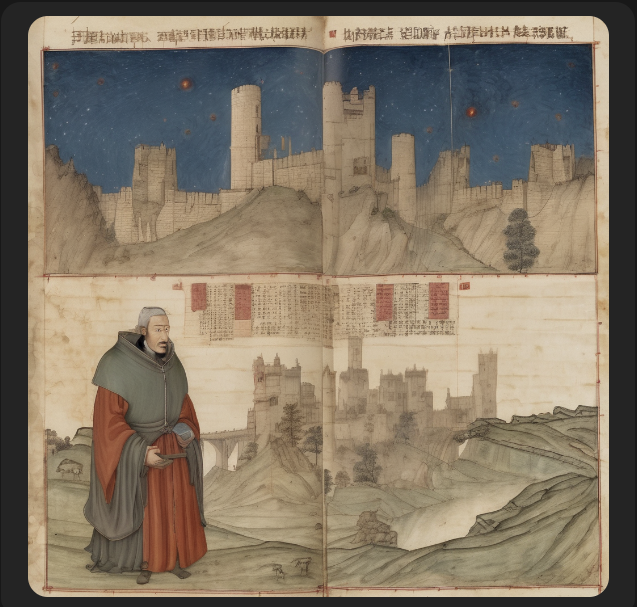Chinese astronomers may have spotted Pons-Brooks in 1385, and an Italian astronomer may have glimpsed it in 1457.
Comet 12P/Pons–Brooks has been identified as a comet observed in 1385 and in 1457. The 1385 apparition was very favorable and the comet was recorded by the Chinese in Ming Shilu and was also mentioned in some European sources. Brooks is an intermediate-period comet (orbital period around 71 years) comparable to 1P/Halley that boasts a rich history of cosmic exploration. After other of its sightings , the comet's path was adjusted, and astronomers imagination it would return near the sun on May 27, 1954. Using this prediction, Elizabeth Roemer from Lick Observatory found the comet on June 20, 1953, very close to where it was expected to be. It appeared faint at first but then brightened in July, dimmed again by mid-July, and slowly brightened as it neared its closest approach to the sun.
By September 15, it reached a moderate brightness but had another sudden increase in brightness by the 28th. Another brightening occurred in December before the comet behaved as anticipated. Its brightest point was in late April, reaching magnitude 6.
Between 1740 and 2167, the comet's orbit remains quite stable, with minimal influence from planets. Its closest approach to Earth during this time was 0.634 astronomical units (AU) on January 9, 1884, but Earth's gravity didn't significantly affect its path.
Many appearance in 2024 will probably be a chance to see it. However, otherwise may have another opportunity in the summer of 2095, when 12P/Pons-Brooks will reach its perihelion on August 10.
Comet 12P/Pons–Brooks has been identified as a comet observed in 1385 and in 1457. The 1385 apparition was very favorable and the comet was recorded by the Chinese in Ming Shilu and was also mentioned in some European sources. Brooks is an intermediate-period comet (orbital period around 71 years) comparable to 1P/Halley that boasts a rich history of cosmic exploration. After other of its sightings , the comet's path was adjusted, and astronomers imagination it would return near the sun on May 27, 1954. Using this prediction, Elizabeth Roemer from Lick Observatory found the comet on June 20, 1953, very close to where it was expected to be. It appeared faint at first but then brightened in July, dimmed again by mid-July, and slowly brightened as it neared its closest approach to the sun.
By September 15, it reached a moderate brightness but had another sudden increase in brightness by the 28th. Another brightening occurred in December before the comet behaved as anticipated. Its brightest point was in late April, reaching magnitude 6.
Between 1740 and 2167, the comet's orbit remains quite stable, with minimal influence from planets. Its closest approach to Earth during this time was 0.634 astronomical units (AU) on January 9, 1884, but Earth's gravity didn't significantly affect its path.
Many appearance in 2024 will probably be a chance to see it. However, otherwise may have another opportunity in the summer of 2095, when 12P/Pons-Brooks will reach its perihelion on August 10.
Chinese astronomers may have spotted Pons-Brooks in 1385, and an Italian astronomer may have glimpsed it in 1457.
Comet 12P/Pons–Brooks has been identified as a comet observed in 1385 and in 1457. The 1385 apparition was very favorable and the comet was recorded by the Chinese in Ming Shilu and was also mentioned in some European sources. Brooks is an intermediate-period comet (orbital period around 71 years) comparable to 1P/Halley that boasts a rich history of cosmic exploration. After other of its sightings , the comet's path was adjusted, and astronomers imagination it would return near the sun on May 27, 1954. Using this prediction, Elizabeth Roemer from Lick Observatory found the comet on June 20, 1953, very close to where it was expected to be. It appeared faint at first but then brightened in July, dimmed again by mid-July, and slowly brightened as it neared its closest approach to the sun.
By September 15, it reached a moderate brightness but had another sudden increase in brightness by the 28th. Another brightening occurred in December before the comet behaved as anticipated. Its brightest point was in late April, reaching magnitude 6.
Between 1740 and 2167, the comet's orbit remains quite stable, with minimal influence from planets. Its closest approach to Earth during this time was 0.634 astronomical units (AU) on January 9, 1884, but Earth's gravity didn't significantly affect its path.
Many appearance in 2024 will probably be a chance to see it. However, otherwise may have another opportunity in the summer of 2095, when 12P/Pons-Brooks will reach its perihelion on August 10.
0 Kommentare
0 Anteile
2KB Ansichten




